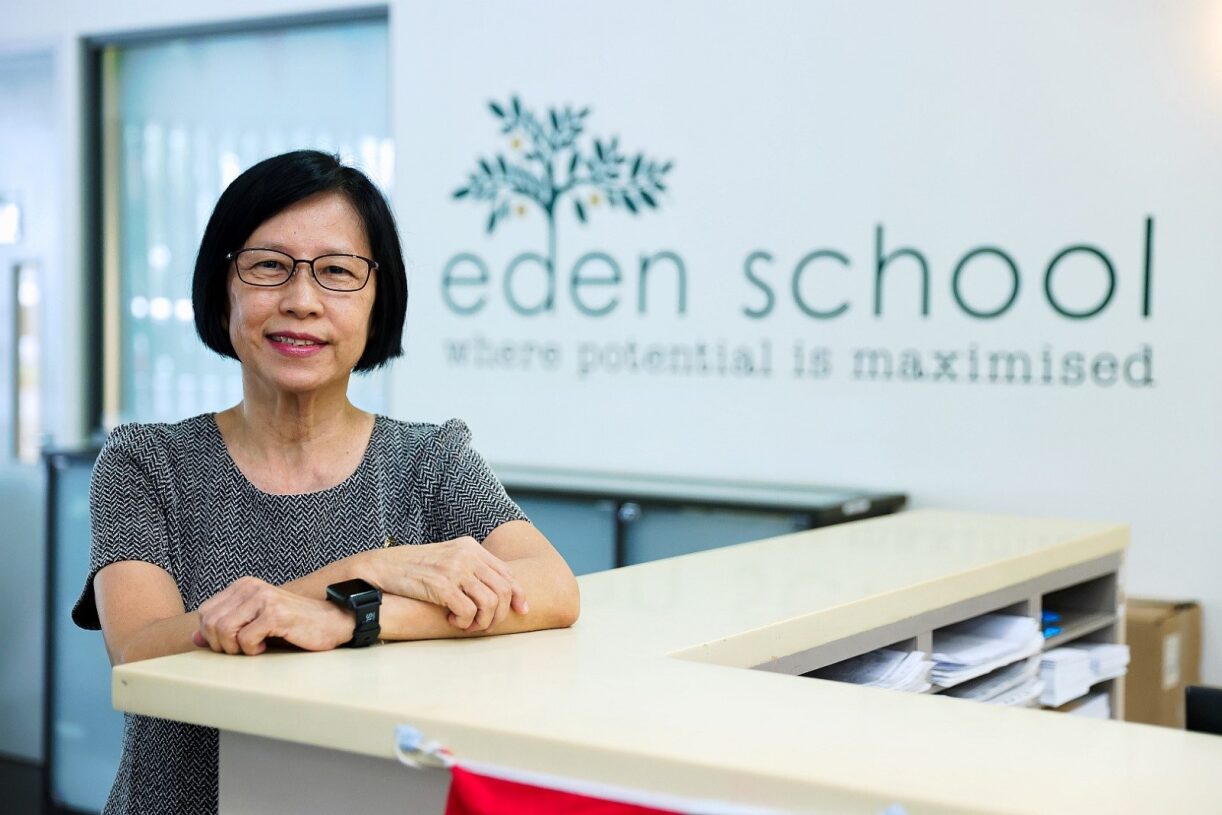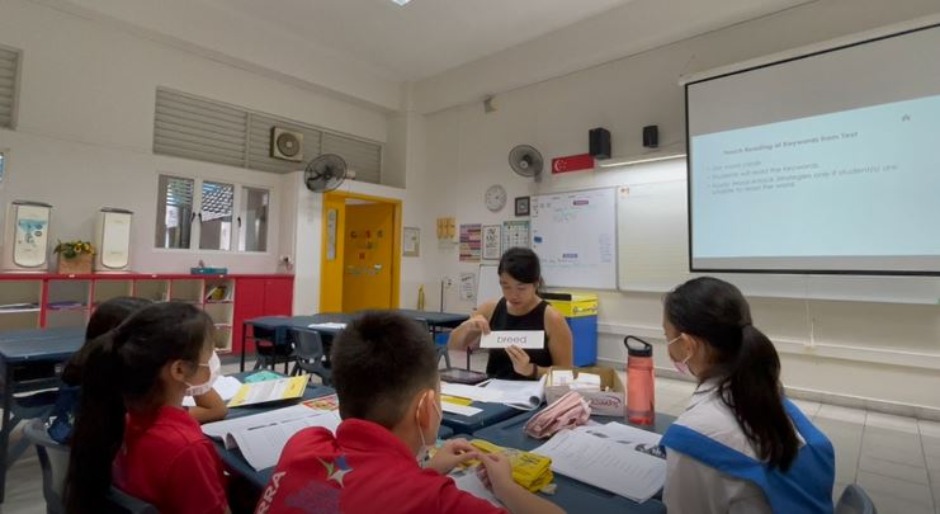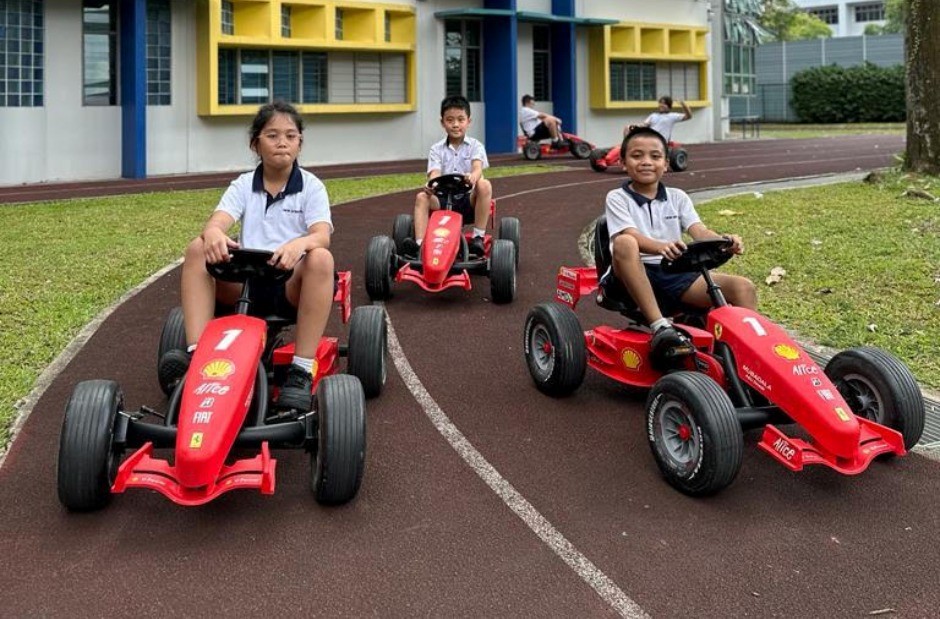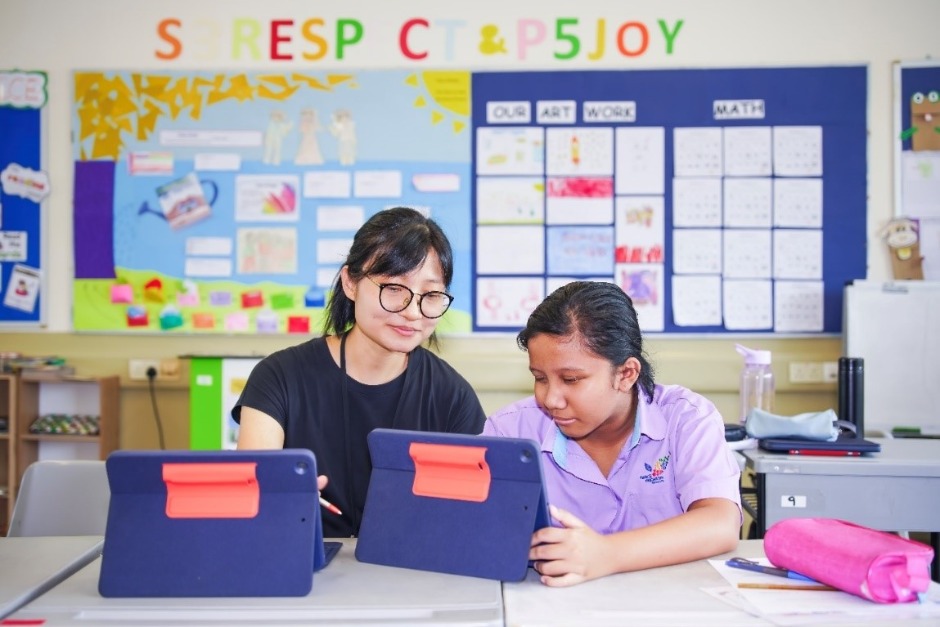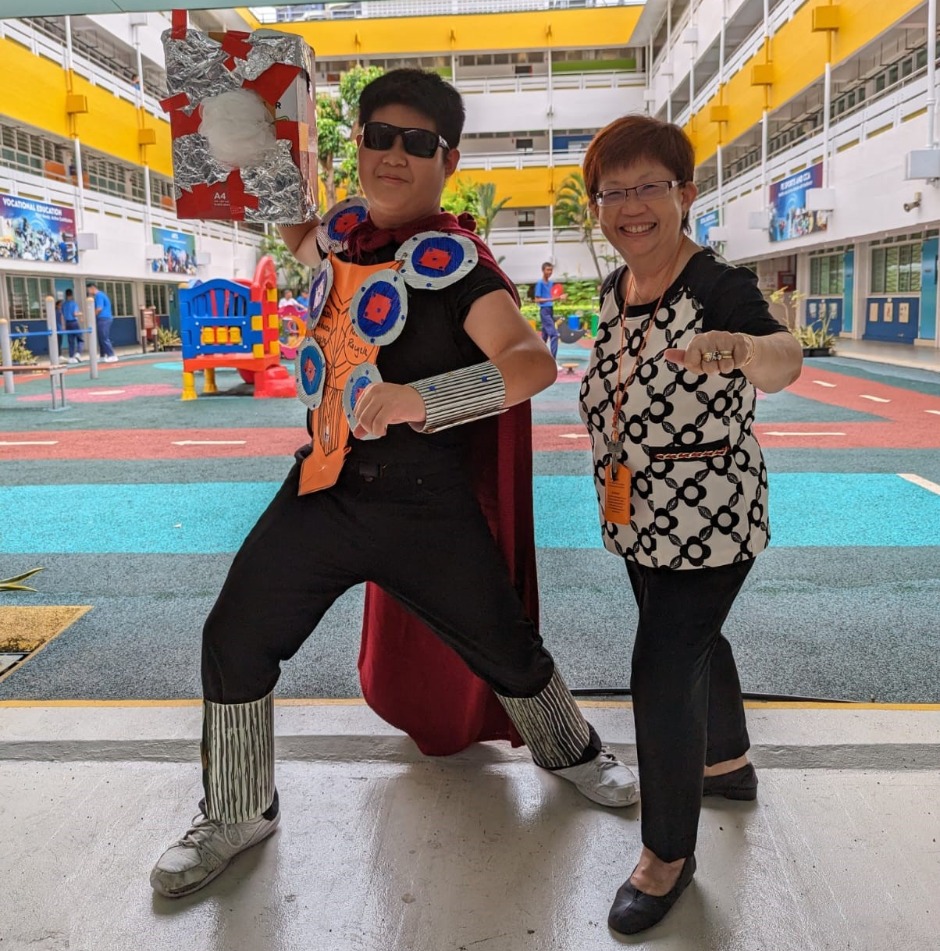Inventive Ways to Help Pupils with Special Needs
11 Jul 2007
Mrs Fawzi alias Rahmah Mohd Ali is a Special Needs Officer at Gan Eng Seng Primary School. She gives us a glimpse of how the school has implemented various strategies and programmes to help pupils with special needs.
When one of my pupils first joined us at Gan Eng Seng Primary School, he would walk around and speak loudly in the assembly hall. As he has autism, the usual explanations about why pupils had to be quiet during assembly didn’t work with him.
To help him, I suggested having a structure in the form of a shape to define a “space” for him. He chose to have a square and his teacher designed a foldable square frame with him. With this, along with a set of targeted behaviours, the pupil has been carrying the square structure happily into the hall and stays seated within the space as assigned. No problem!
Inventive strategies like this are typical of Gan Eng Seng Primary School’s “one size does not fit all” philosophy, which applies to all our pupils and all the more so for pupils with special needs. As I work with children who have one or more learning disabilities – such as dyslexia, Attention Deficit Hyperactivity Disorder (ADHD), Autism Spectrum Disorder (ASD) or specific language impairment – and who come from diverse family backgrounds, I’ve found that each pupil benefits from a different approach or combination of strategies.
Helping one Pupil at a Time
For example, I have worked with a severely dyslexic pupil who was initially unable to recognise letters of the alphabet or put them in order. I adopted a multi-sensory approach with him that included activities like tracing in sand during his sound and visual drills. This enabled him to connect the tactile contact with the visual “look” and sound of the letters.
Family engagement is critical too. The pupil’s family supported our efforts by reinforcing at home the reading technique I taught him with a set of word cards. After a year of these combined approaches, the pupil is now able to identify his letters and sounds, and read words. He is reading Oxford Reading Tree books, where new words are introduced and reinforced in the subsequent series, and is able to work on short comprehension passages.
For another child, who has both dyslexia and Attention Deficit Hyperactivity Disorder, I focused on helping him to develop his attention span by introducing him to a timer system where he monitors his own attention span on an activity. This might take the form of a visual cue, where the remaining time is indicated as a red portion of a clock face, or an auditory cue, where a ringer is used. The pupil enjoys using the timer so much that he has even started using a stopwatch that his mother bought for him.
School Support for Special Needs
These strategies and others have succeeded also because of the school’s infrastructure and support. I have the flexibility – depending on the pupils’ needs – to work with them either individually or in groups of 2-3 children per session, either in class or separately from their class. This close attention includes drawing up Individual Education Plans and monitoring their progress. I work with their teachers to help maximise their learning in class, and, for disabilities such as hearing or speech impairment, we involve external agencies as well.
Sometimes, we encounter pupils who have a learning difficulty, even though they have not been diagnosed as such. In these cases, the teacher consults the Learning Support Coordinator or myself, who makes recommendations to the teacher on how to work with the pupil. If the difficulty persists, we review the pupil’s work and carry out basic assessments, interviews and observations. We also consult an education psychologist from MOE, and if the pupil is at risk of having a learning disability, we seek the parents’ consent to refer the pupil for diagnosis.
At the broader level, the school has a Case Management Team which meets every month to discuss the types of support (learning support, learning disabilities, emotional or behavioural difficulty) needed for each case and to update on the pupils’ progress. The team is made up of the Head of Department for Pupil Management &Welfare, Learning Support Coordinators, Maths Support Teacher, Special Needs Officer and School Counsellors. The Principal and Vice Principal are advisors to the team.
Gan Eng Seng Primary School also has a Special Needs Resource room, which has been a hit among all children in the school. It comprises five learning centres, each with an activity focusing on a component of language learning: phonics, spelling, reading, sentence/word building and process writing. These centres make learning more motivating and meaningful for pupils with learning disabilities. At the end of a session, they can be further rewarded with the Free Play corner, where there are lots of building games, floor puzzles, Sudoku puzzles and many other mind-boggling games to engage them.
Working with pupils with special needs takes a degree of ingenuity, passion, patience – and a sense of humour! With the right attitude on the part of educators and others involved in the pupils’ development, we can help these pupils to learn important life skills and enjoy education in a mainstream school.
Contributed by:
Mrs Fawzi alias Rahmah Mohd Ali
Special Needs Officer
Gan Eng Seng Primary School

